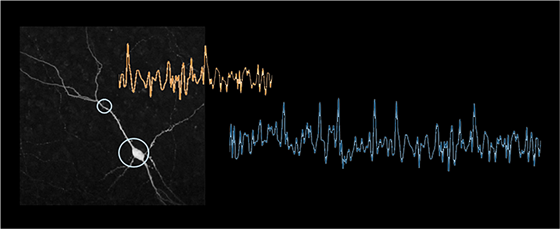At the Neuroscience 2024 conference (www.sfn.org), Bruker Corporation today announced the release of the OptoVolt module to further expand the advanced neuroscience research capabilities on Bruker’s Ultima multiphoton microscope platform. OptoVolt accelerates imaging speeds to beyond 1000 frames per second for the capture of millisecond dynamics of cell-to-cell neural communication. With the emergence of fluorescent voltage indicators, researchers are excited to measure neural activity with higher temporal resolution than traditional fluorescent calcium indicators have allowed.
The OptoVolt module uniquely addresses the challenges of voltage imaging by providing a scanner technology that is capable of operating at the ultrafast speeds and with the signal-to-noise ratio required to detect individual neural events. Furthermore, when combined with Bruker’s NeuraLight 3D Ultra spatial light modulator (SLM) for 3D optogenetic activation, the entire platform enables researchers to probe input‑output relationships of neural ensembles at unprecedented temporal and spatial resolutions.
![]()
“I see voltage imaging becoming a key tool in the investigation of neural circuits and systems neuroscience in the near future,” said Professor Thomas Clandinin, Department of Neurobiology at Stanford University. “We are excited about new instrumentation that expands the possibilities for optically interrogating cellular and sub-cellular signaling at the temporal resolution of individual action potentials.”
“We are proud to introduce this significant advancement in neural circuit imaging capabilities, with its combined unparalleled imaging speed and signal-to-noise performance that allows millisecond neural event detection at single neuron resolution,” added Xiaomei Li, Ph.D., Vice President and General Manager of Bruker’s Fluorescence Microscopy Business. “OptoVolt demonstrates how we pay attention to our customers’ evolving research needs and work closely with them to drive innovation. With such direct collaboration, we are able to build upon the versatile Ultima 2Pplus platform as the ideal solution for all-optical neuroscience research.”
